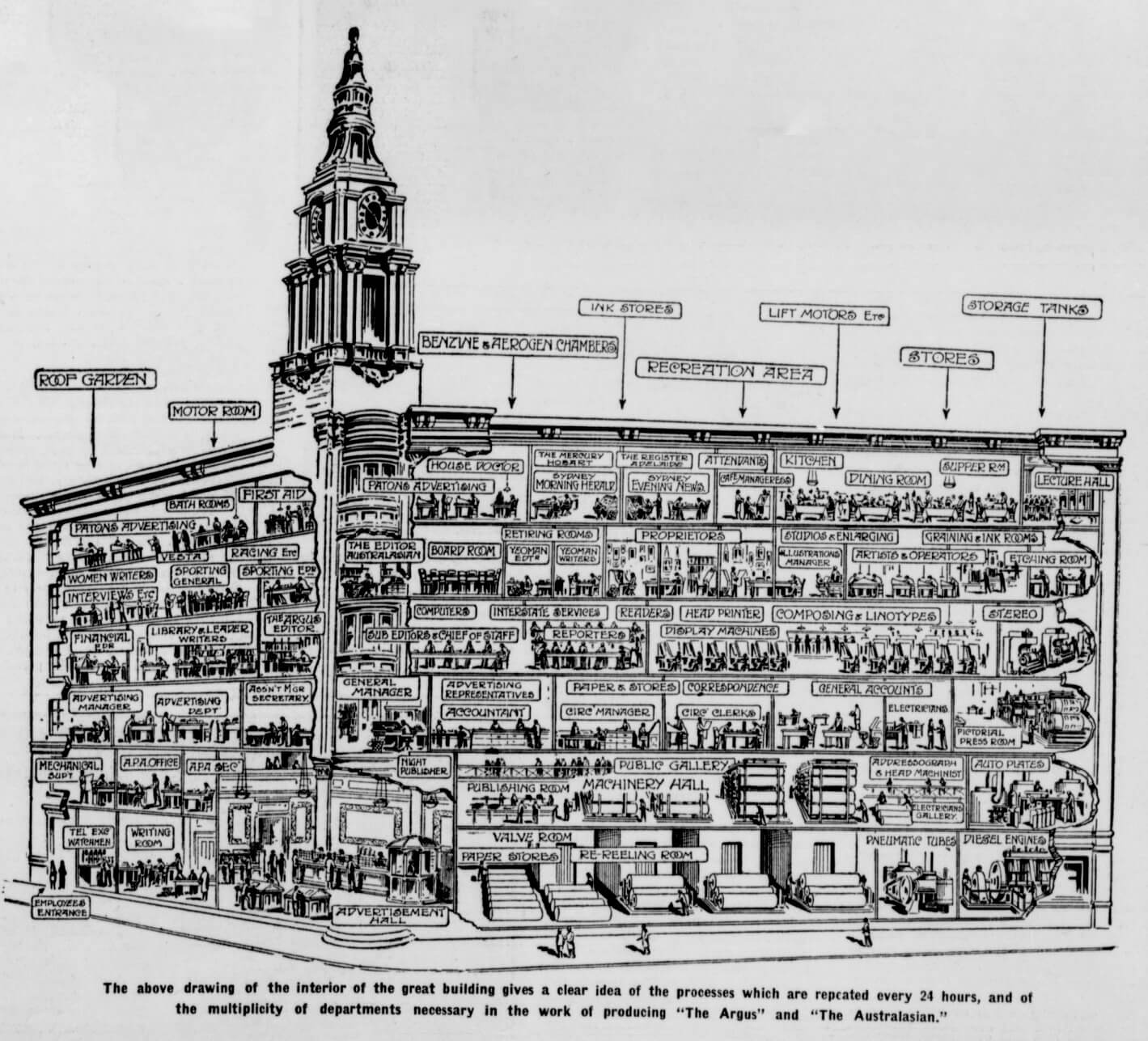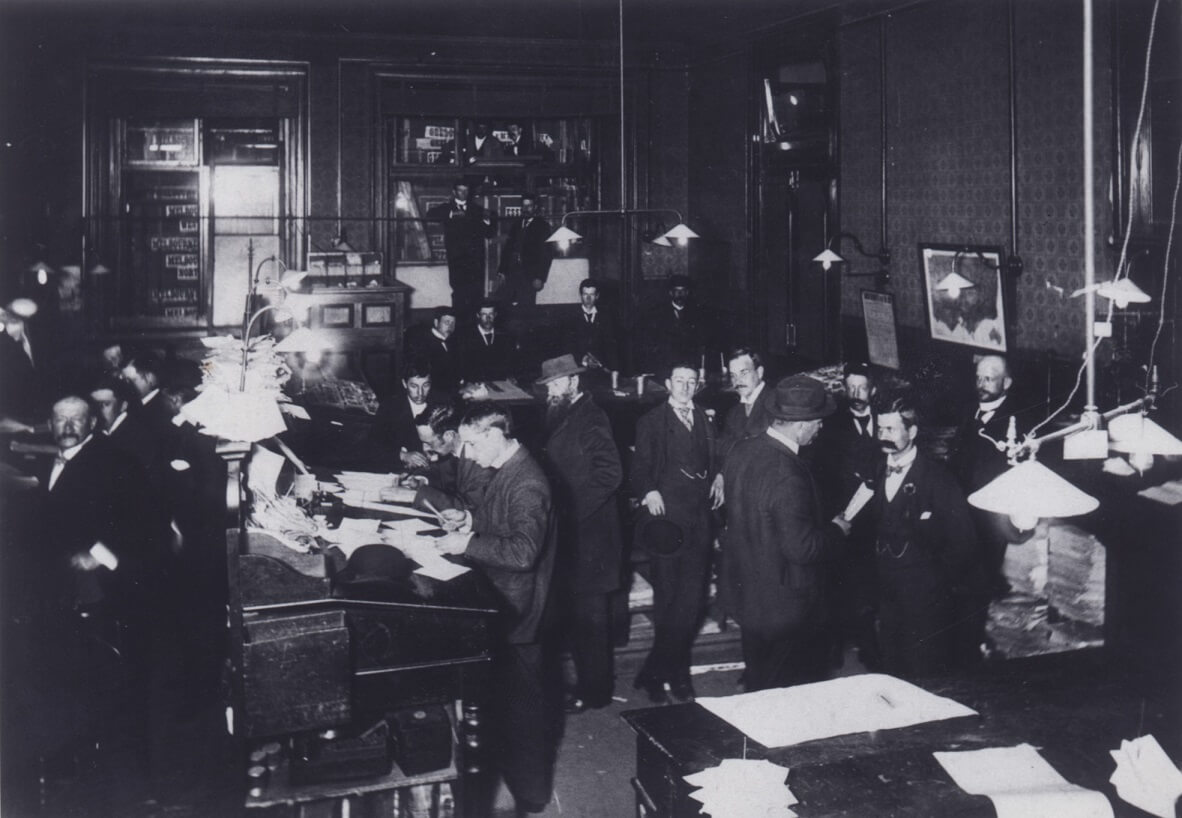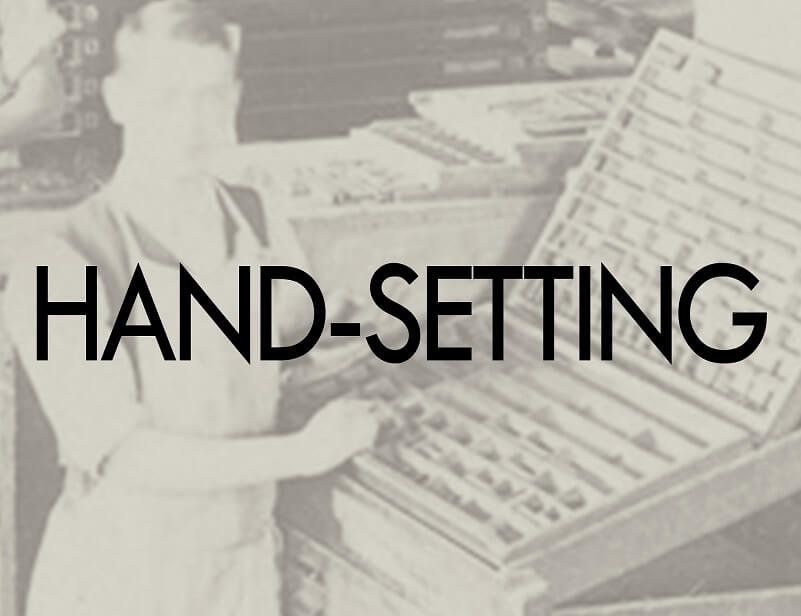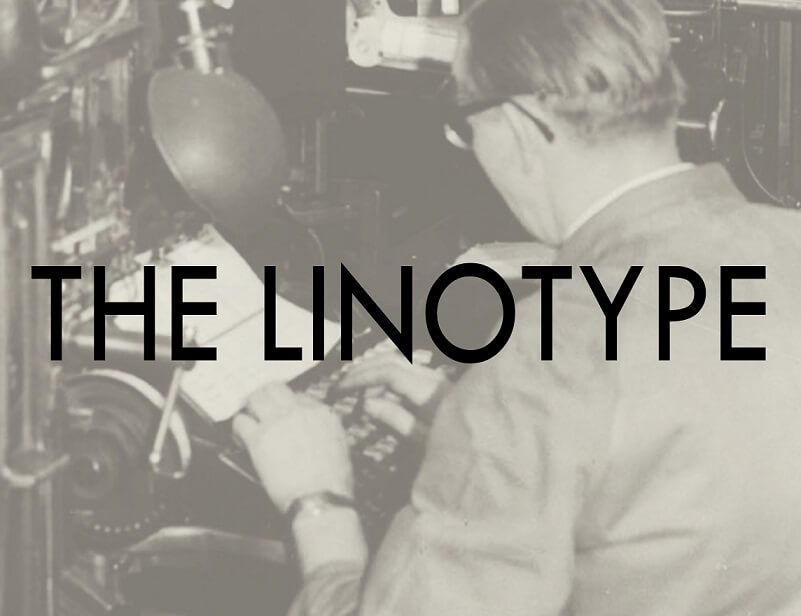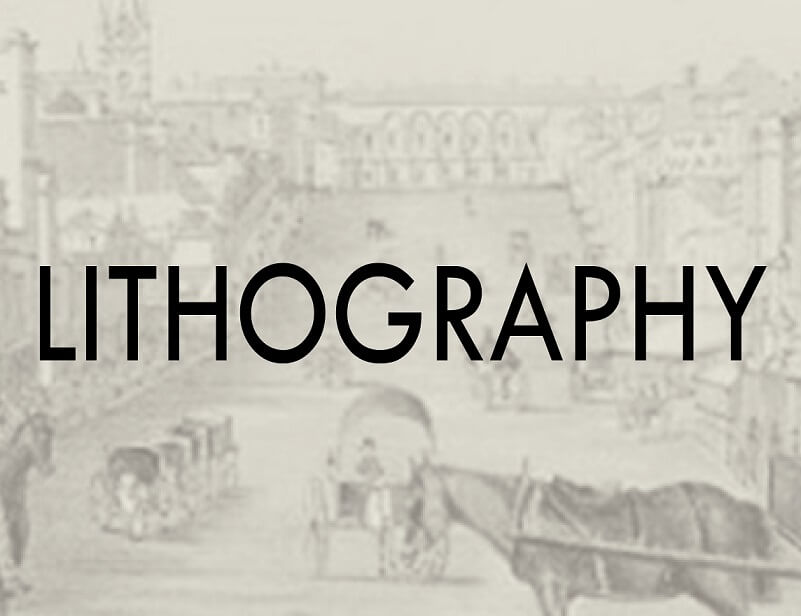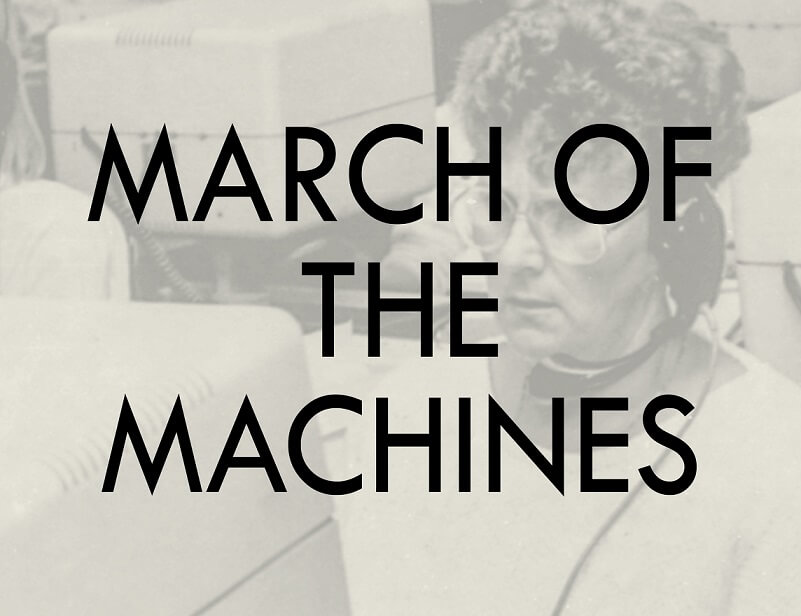For centuries the printing industry relied on a range of traditional crafts, most of which are now rare. Stereotyping, electrotyping, dot-etching and engraving, hand-binding, hand-composing, Linotype and Monotype operations have all but disappeared.
‘New Building Described’, The Argus, 9 September 1926
Reproduced courtesy National Library of Australia
The Age Reporter's Room, Collins Street, Melbourne, by unknown photographer, c. 1900
Reproduced courtesy The Age
By 1900, newspapers were at the height of their power and influence. They were inexpensive and ubiquitous: the average Australian read several newspapers per day. With the advent of radio and later television, newspaper circulation began a gradual but steady decline. Today, the publishing industry has turned its energy to online and electronic media and newspapers continue to shed printers and journalists.
Automation has transformed the factory floor: more print is produced in less time, at lower cost and with far fewer workers. Even those who write for print are endangered. The slow decline of newspapers is well-documented, as advertisers and readers move to digital platforms. Technology has dramatically affected the way newspapers are managed, financed, staffed and, indeed, read. As advertising revenue diverted to online, entire departments disappeared or were reduced to skeleton staff. Printing moved off-site with minimal labour required. Today’s newsroom looks very different. The Media Entertainment and Arts Alliance (the journalists’ union) estimates that up to 5,000 Australian journalists have left the industry since 2010.
Author: Ann Wilcox
Next Topic: On the Land
Further Reading:
Institutions
New England Regional Art Museum
Online sources
Encyclopedia of Melbourne
Secondary Sources
Amanda Scardamaglia, Printed on Stone: the lithographs of Charles Troedel, Melbourne, Melbourne Books, 2020
Early history of printing in Australia, Sydney, Government Printer, 18--?, National Library of Australia digitised item
Jesse Adams Stein, ‘Masculinity and material culture in technological transitions in the workplace: From letterpress to offset-lithography, 1960s – 1980s’, Technology & Culture, vol. 57, no. 1, 2016
Jesse Adams Stein, Hot Metal: Material Culture & Tangible Labour, Manchester, Manchester University Press, 2016
Jesse Adams Stein, Precarious Printers: Labour, Technology & Material Culture at the NSW Government Printing Office, 1959–1989, PhD Thesis, School of Design, Faculty of Design, Architecture & Building, University of Technology Sydney, 2014
Jim Hagan, Printers and Politics: A History of the Australian Printing Unions 1850-1950, Canberra, Australian National University Press (in association with the Printing and Kindred Industries Union, 1966
Raelene Frances, The Politics of Work: Gender and Labour in Victoria, 1880-1939, Oakleigh, Victoria, Cambridge University Press, 1993
With special thanks to Graham Elphick (Publicity Officer - Penrith Museum of Printing), James Cryer and Andrew McCourt for their expertise and assistance.

